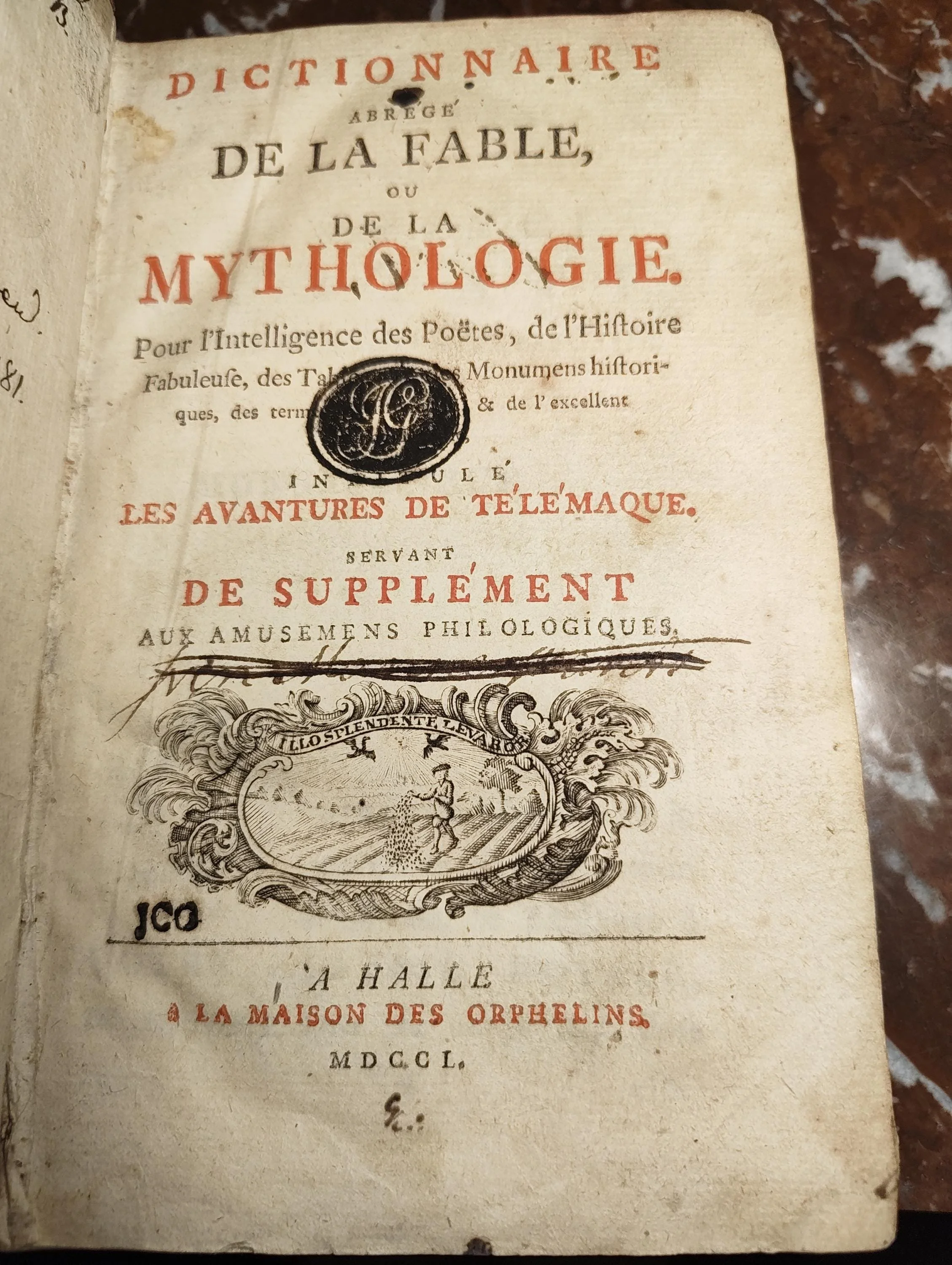 Image 1 of 9
Image 1 of 9

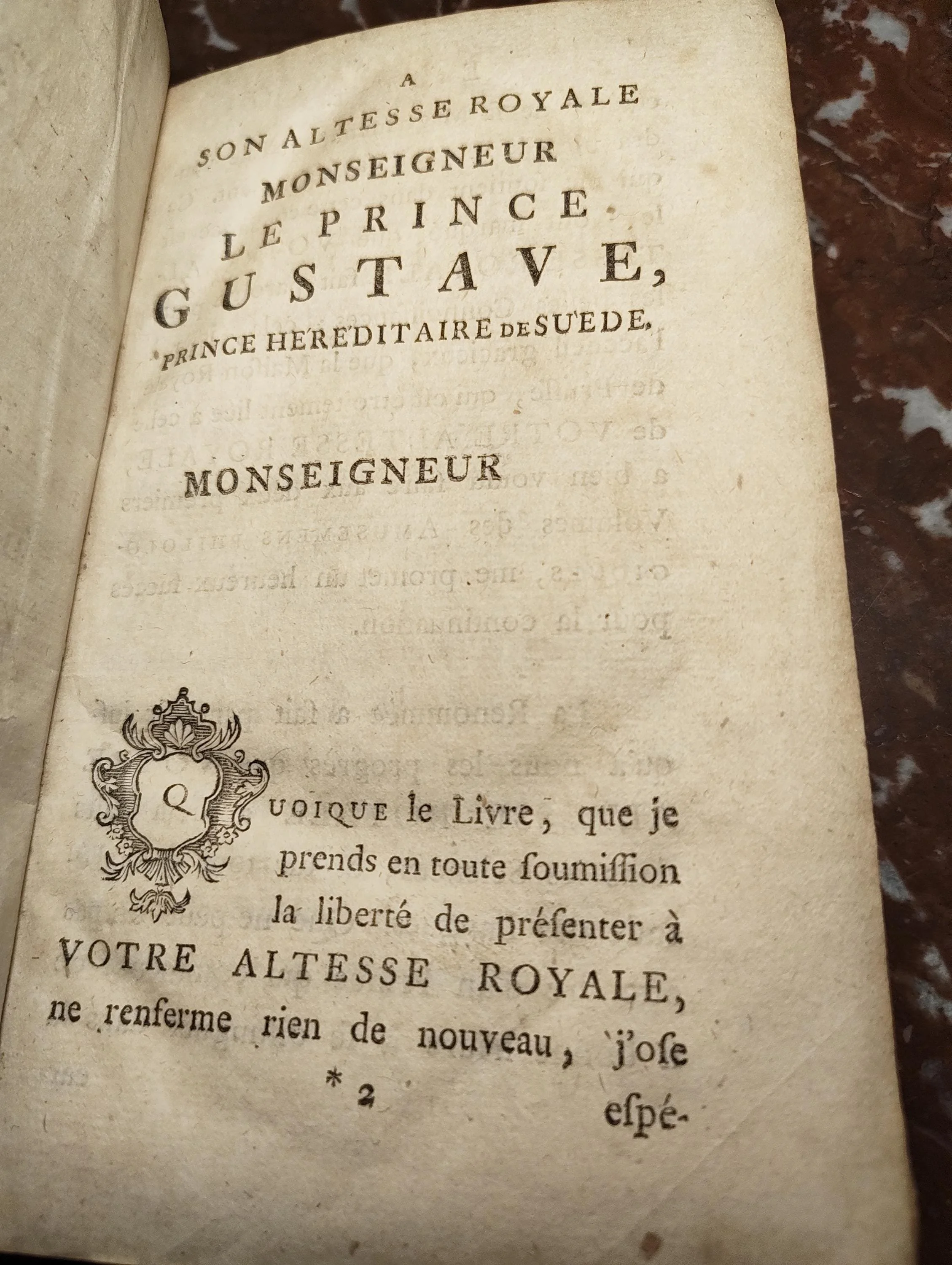 Image 2 of 9
Image 2 of 9

 Image 3 of 9
Image 3 of 9

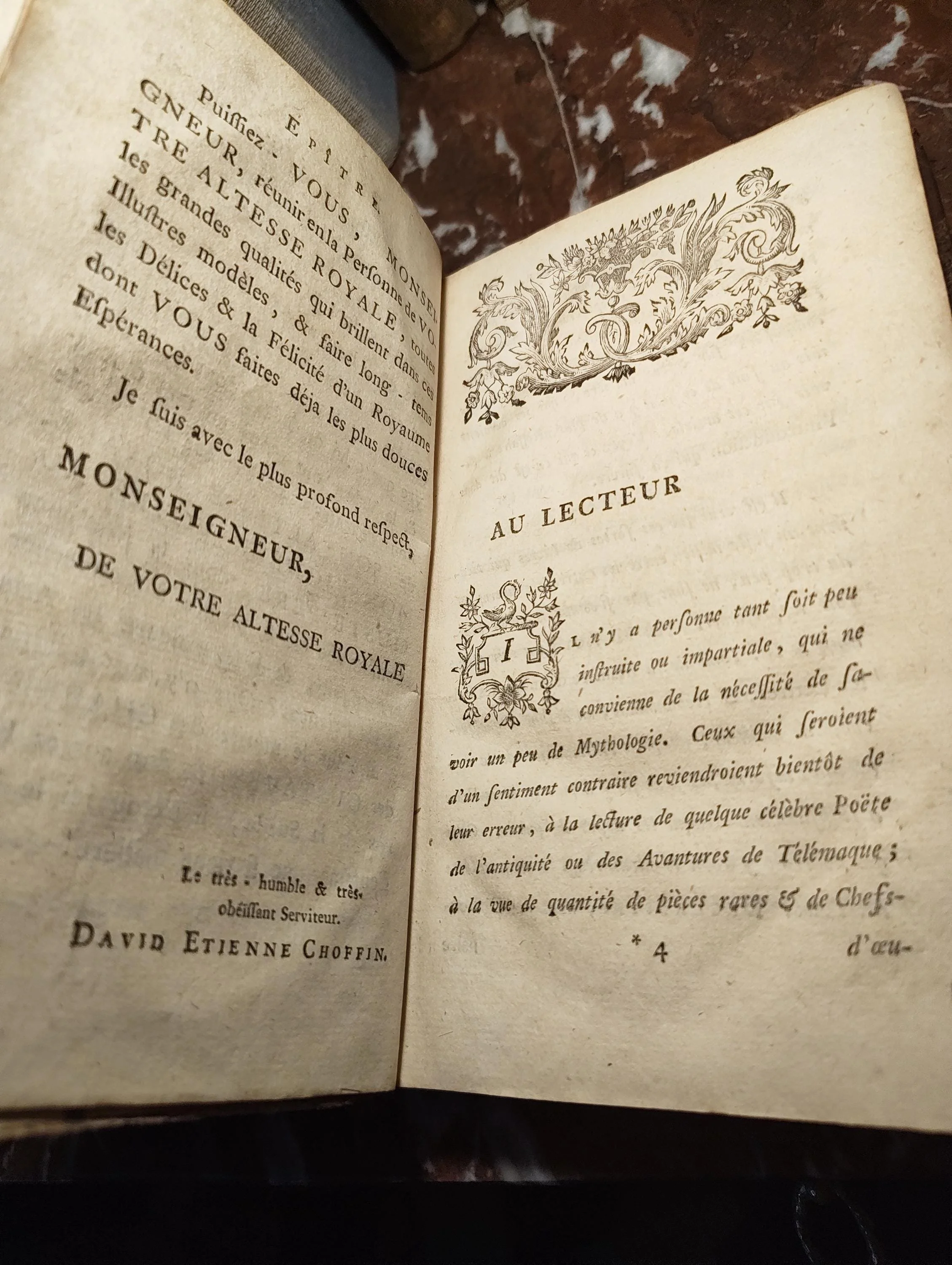 Image 4 of 9
Image 4 of 9

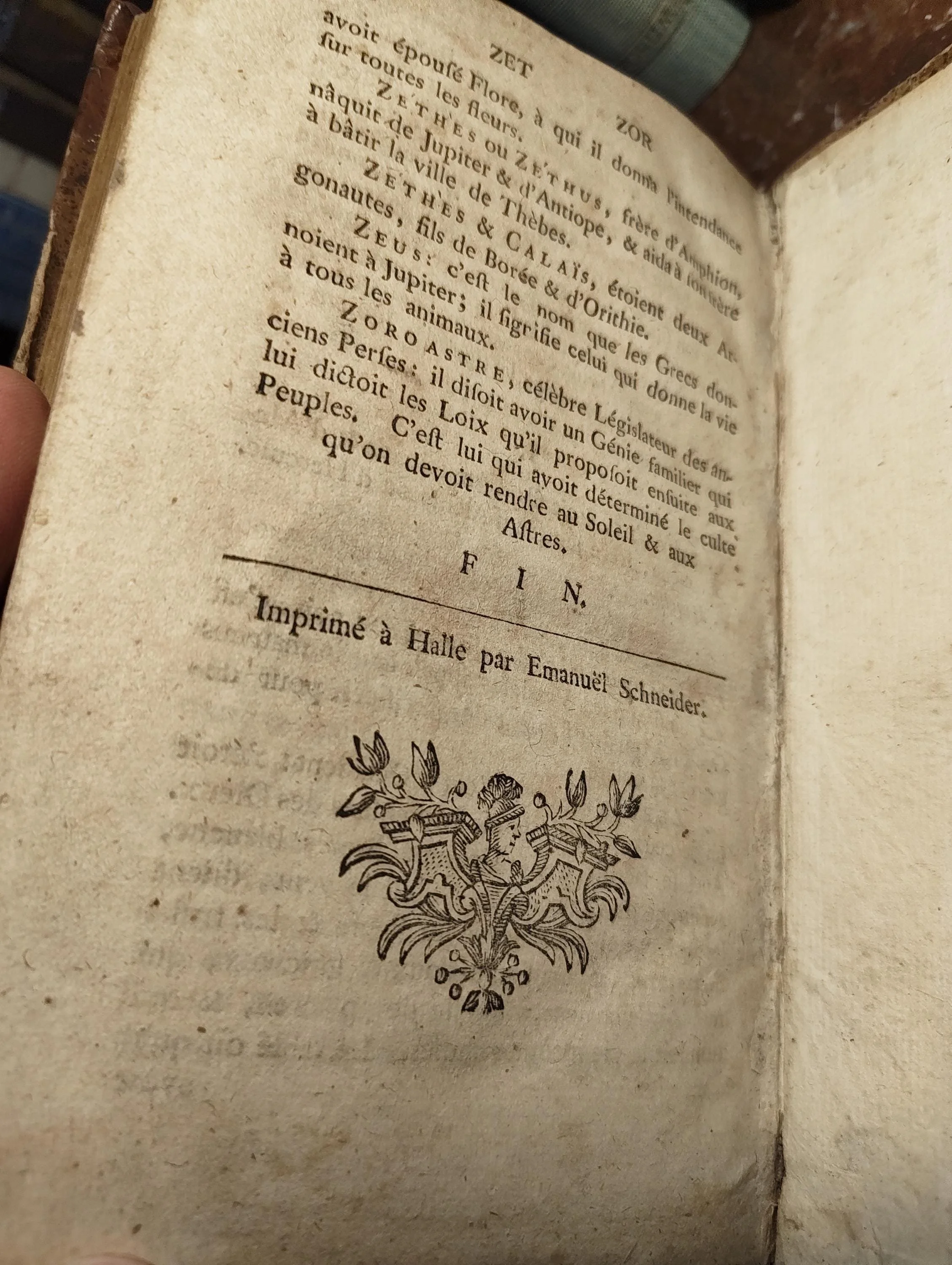 Image 5 of 9
Image 5 of 9

 Image 6 of 9
Image 6 of 9

 Image 7 of 9
Image 7 of 9

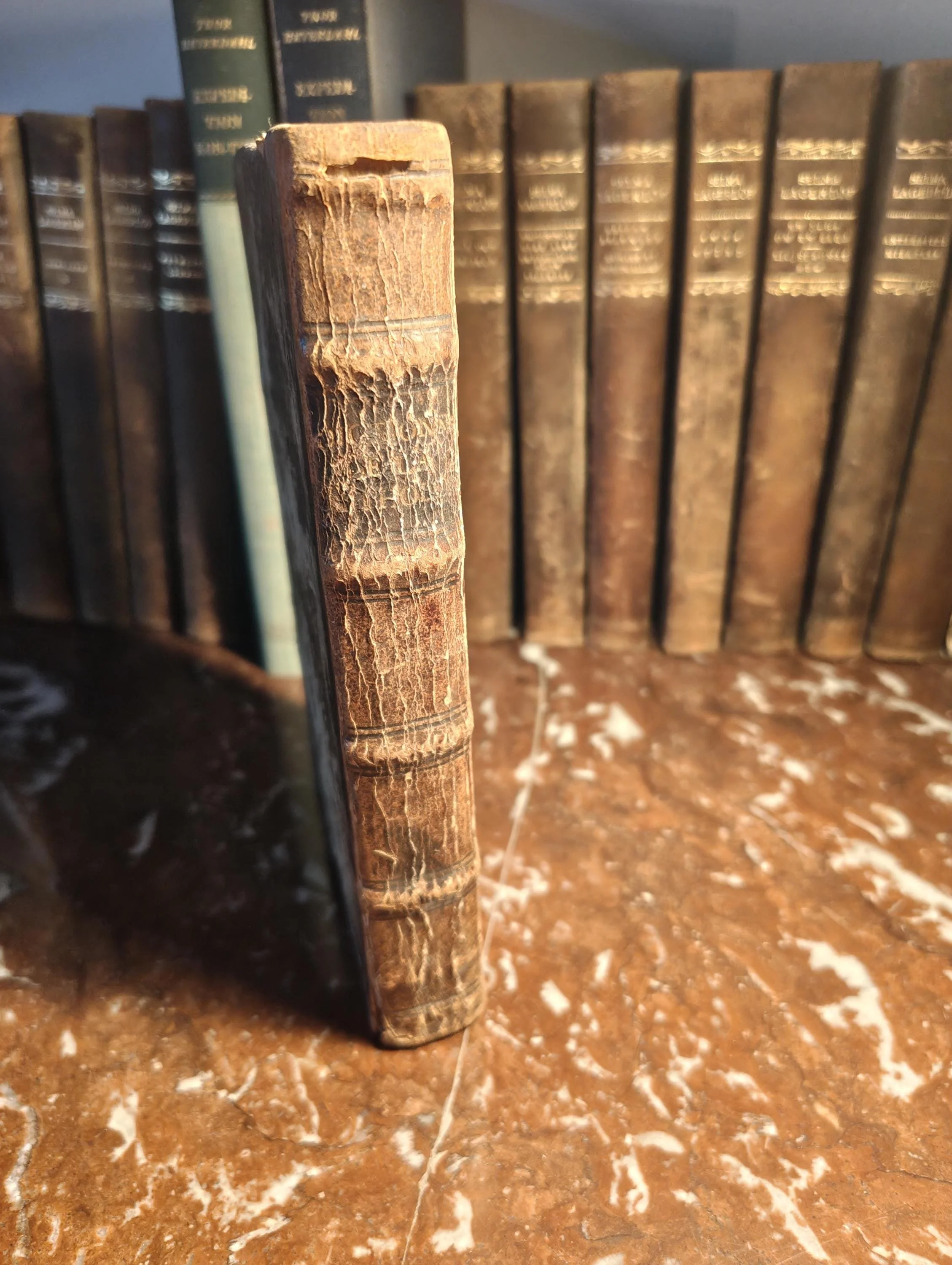 Image 8 of 9
Image 8 of 9

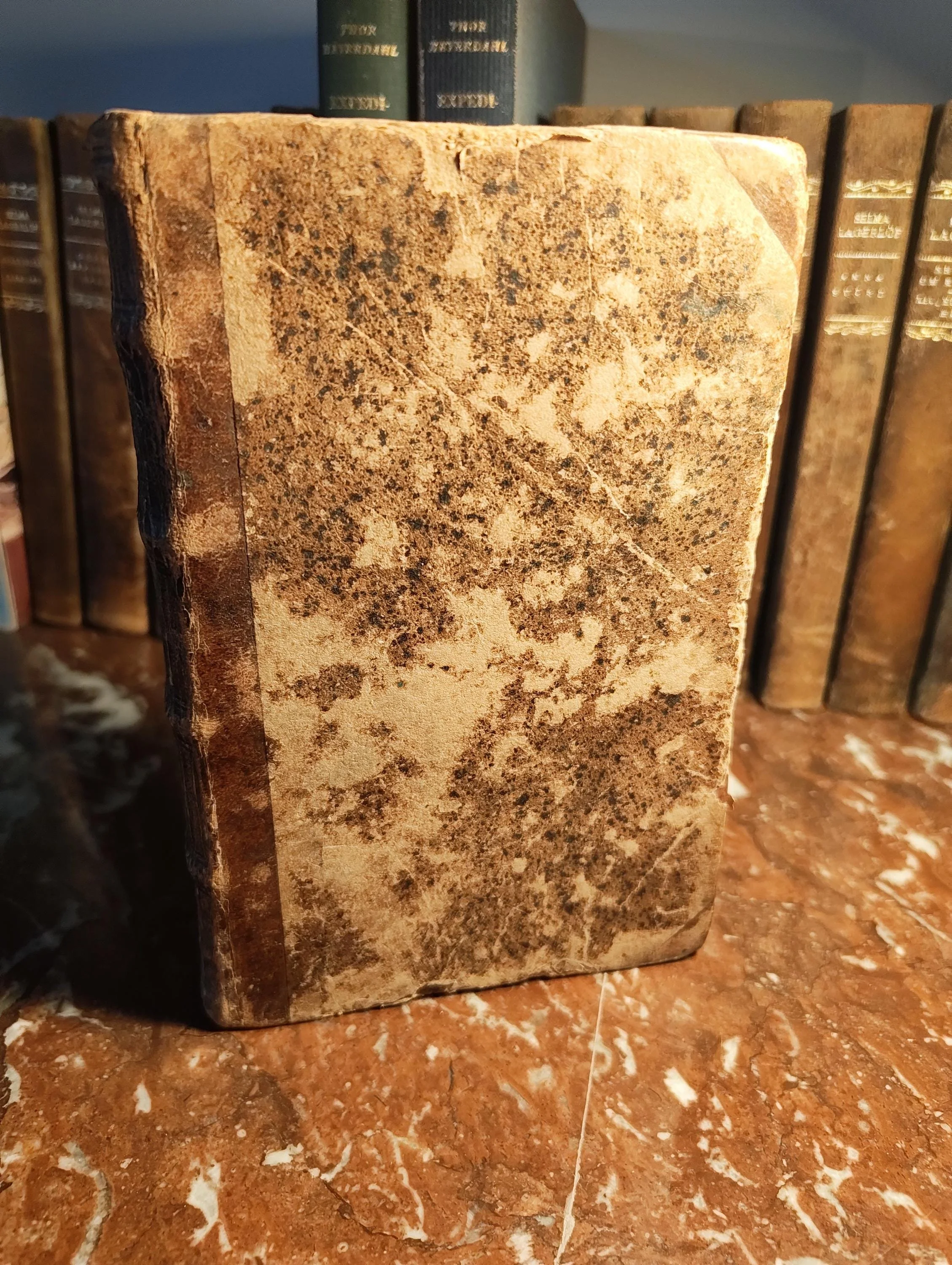 Image 9 of 9
Image 9 of 9










Dictionnaire abrégé de la Fable ou de la Mythologie. Halle, 1751. Contemporary Binding. With Printed Dedication to Crown Prince Gustav III
A mid eighteenth century mythological dictionary dedicated to the future king of Sweden
This 1751 Halle printing of Dictionnaire abrégé de la Fable ou de la Mythologie stands as a fascinating witness to the circulation of classical learning during the Enlightenment as well as to the cultural presence of the Swedish royal house within the scholarly world of continental Europe. Issued by the Maison des Orphelins, the volume carries a printed dedication to “Son Altesse Royale Monseigneur le Prince Gustave, Prince Héritaire de Suède,” referring to the young Crown Prince Gustav, later Gustav III, who would ascend the throne in 1771 and become one of Sweden’s most culturally ambitious monarchs.
French remained the language of diplomacy and of the European intellectual elite throughout the eighteenth century, and mythological dictionaries such as this one served poets, historians, artists, and students who sought concise introductions to the classical figures that underpinned Enlightenment aesthetics. The presence of the dedication positions the work within the educational and ceremonial networks that linked German scholarly presses with Scandinavian courts.
The book retains its original eighteenth century binding, with marbled boards and a leather spine now visibly worn from its long life. The title page, elegantly printed in red and black, is followed by ornamental headpieces and decorative initials that reflect the typographical conventions of mid century Halle. The text is complete and structurally sound, with natural toning, occasional foxing, and the signs of careful handling over its nearly three hundred years.
Provenance includes an eighteenth or nineteenth century Ex Libris Boalt and additional manuscript inscriptions, adding another layer of Swedish connection and scholarly ownership to a volume that already carries a royal dedication. Such provenance enriches the narrative of the book and provides context for its movement within Swedish learned circles.
As an artefact, the dictionary is more than a reference work. It embodies the intersection of Enlightenment pedagogy, classical revival, and Swedish royal patronage. For collectors of Swedish history, mythology, or eighteenth century printing, this volume represents a rare and culturally significant example of how classical knowledge was framed and disseminated across Europe.
A mid eighteenth century mythological dictionary dedicated to the future king of Sweden
This 1751 Halle printing of Dictionnaire abrégé de la Fable ou de la Mythologie stands as a fascinating witness to the circulation of classical learning during the Enlightenment as well as to the cultural presence of the Swedish royal house within the scholarly world of continental Europe. Issued by the Maison des Orphelins, the volume carries a printed dedication to “Son Altesse Royale Monseigneur le Prince Gustave, Prince Héritaire de Suède,” referring to the young Crown Prince Gustav, later Gustav III, who would ascend the throne in 1771 and become one of Sweden’s most culturally ambitious monarchs.
French remained the language of diplomacy and of the European intellectual elite throughout the eighteenth century, and mythological dictionaries such as this one served poets, historians, artists, and students who sought concise introductions to the classical figures that underpinned Enlightenment aesthetics. The presence of the dedication positions the work within the educational and ceremonial networks that linked German scholarly presses with Scandinavian courts.
The book retains its original eighteenth century binding, with marbled boards and a leather spine now visibly worn from its long life. The title page, elegantly printed in red and black, is followed by ornamental headpieces and decorative initials that reflect the typographical conventions of mid century Halle. The text is complete and structurally sound, with natural toning, occasional foxing, and the signs of careful handling over its nearly three hundred years.
Provenance includes an eighteenth or nineteenth century Ex Libris Boalt and additional manuscript inscriptions, adding another layer of Swedish connection and scholarly ownership to a volume that already carries a royal dedication. Such provenance enriches the narrative of the book and provides context for its movement within Swedish learned circles.
As an artefact, the dictionary is more than a reference work. It embodies the intersection of Enlightenment pedagogy, classical revival, and Swedish royal patronage. For collectors of Swedish history, mythology, or eighteenth century printing, this volume represents a rare and culturally significant example of how classical knowledge was framed and disseminated across Europe.

